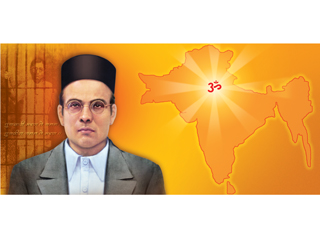 Suniti Choudhury, the youngest female revolutionary of India, was born to a middle-class Bengali family of the Comilla Sub-division of Tippera on 22nd May 1917.
Suniti Choudhury, the youngest female revolutionary of India, was born to a middle-class Bengali family of the Comilla Sub-division of Tippera on 22nd May 1917.
The year was 1930. The Civil Disobedience Movement was in full throttle – the Police brutality was equally strong. Suniti witnessed picketing, processions, and the rapid arrests of men and women – experiences that were elevating her to a new plane of fearlessness.
Around this time, Prafulla Nalini Brahma, her immediate senior at Faizunnisa Girls’ High School, mentored and supplied her with the books – mainly the revolutionary literature banned by the British. “Life is a sacrifice for the Motherland” – the words of Swami Vivekanand shaped her beliefs.
Suniti became the Major of the District Volunteer Corps. She led the parade of girls when Netaji Subhash Chandra Bose was in town to address the student organisation. Prafulla asked Bose about his thoughts on the role of women in the revolutionary movement. Without a pause, Bose replied, “I would be happy to see you in the front row”.
Finally, Biren Bhattacharjee, one of the absconding leaders, secretly interviewed the girls and declared the three to be of outstanding courage. Their practical training began under the supervision of Akhil Chandra Nandi, President of the Tripura Students’ Organisation.
Their target was the District Magistrate Charles Geoffrey Buckland Stevens, a man who would stop at nothing to destroy the Satyagraha. He threw all the leaders into prison and harassed every non-violent Indian who raised a voice. Something had to be done to set the balance right, and Santi-Suniti were going to execute it.
At 10 a.m. on 14th December 1931, a carriage stopped before the District Magistrate’s bungalow. Two teenagers descended from it, giggling, brimming with excitement. Both had a silk wrapper around their sarees, perhaps to beat the cold ! The coachman drove off with some haste, even before they could cross the long corridor.
The girls sent an interview slip through the orderly, and the Magistrate came out, along with Sub-divisional Officer (SDO) Nepal Sen. Stevens glanced at the letter passed to him. The girls, Illa Sen, and Meera Devi as per the signatures, were appealing to the Magistrate for a swimming club. They requested Stevens to sign the letter as a reference. He went to his chamber and soon returned with the signed paper. That was his last move before the shots rang through the house. The notorious magistrate’s last sight was the two girls, now without the silk wrapper, pointing two revolvers straight at his heart. They were promptly arrested.
They came prepared for all the upcoming torture – pricking pins on their fingertips to increase their endurance of pain – so they were not going to break under beatings or speak a word about their secret organisation. They kept a straight face even when molested under the pretence of body searches for weapons.
When the trial began, the courtroom was struck in disbelief over their appearance. They were beaming and enjoying the awkwardness of the spectators. Their smiles faltered only when the verdict was out. It was lifetime imprisonment, which meant they missed their window of martyrdom.
The ordeal ended on 6th December 1939. The amnesty negotiations before the Second World War caused their release. By then, Suniti was 22 – a woman without formal education, with only her brother to help. But the revolutionaries never quit
She started over gallantly, put all the efforts in her studies, passing in the first division of the pre-University course. She carried on to Campbell Medical School for the Licentiate in Medicine and Surgery (LMS) and finally secured admission in Calcutta Medical College in 1944. After completing the MB (now MBBS), she married Pradyot Kumar Ghose, another activist and former political prisoner, her brother’s friend. She breathed her last on 12th January 1988, leaving behind a legacy of patriotism, bravery, kindness, and inspiration.

 Savarkar’s stories of sacrifice, courage and determination are still inspiring
Savarkar’s stories of sacrifice, courage and determination are still inspiring Marita Marita Mareto Zunjen (I welcome death, but fight I will) : goosebumps guaranteed !
Marita Marita Mareto Zunjen (I welcome death, but fight I will) : goosebumps guaranteed ! Do not link Netaji with Savarkar; Netaji was a secular leader : Chandrakumar Bose
Do not link Netaji with Savarkar; Netaji was a secular leader : Chandrakumar Bose The Unsung Hero of our Freedom Struggle Veer Savarkar Smritidin (Date) : 26th February
The Unsung Hero of our Freedom Struggle Veer Savarkar Smritidin (Date) : 26th February Lokmanya Tilak had changed the direction of the freedom struggle : PM Modi
Lokmanya Tilak had changed the direction of the freedom struggle : PM Modi ‘The India House’ movie will be produced : Ram Charan announces on Swatantryaveer Savarkar’s birth anniversary
‘The India House’ movie will be produced : Ram Charan announces on Swatantryaveer Savarkar’s birth anniversary